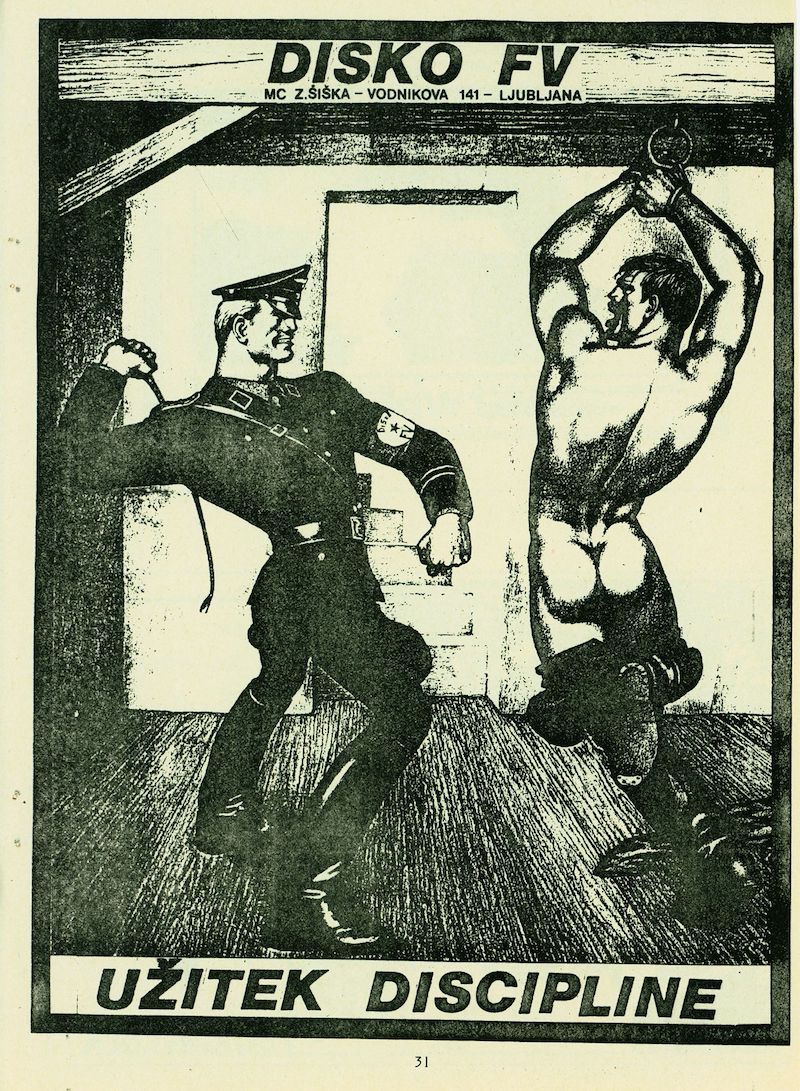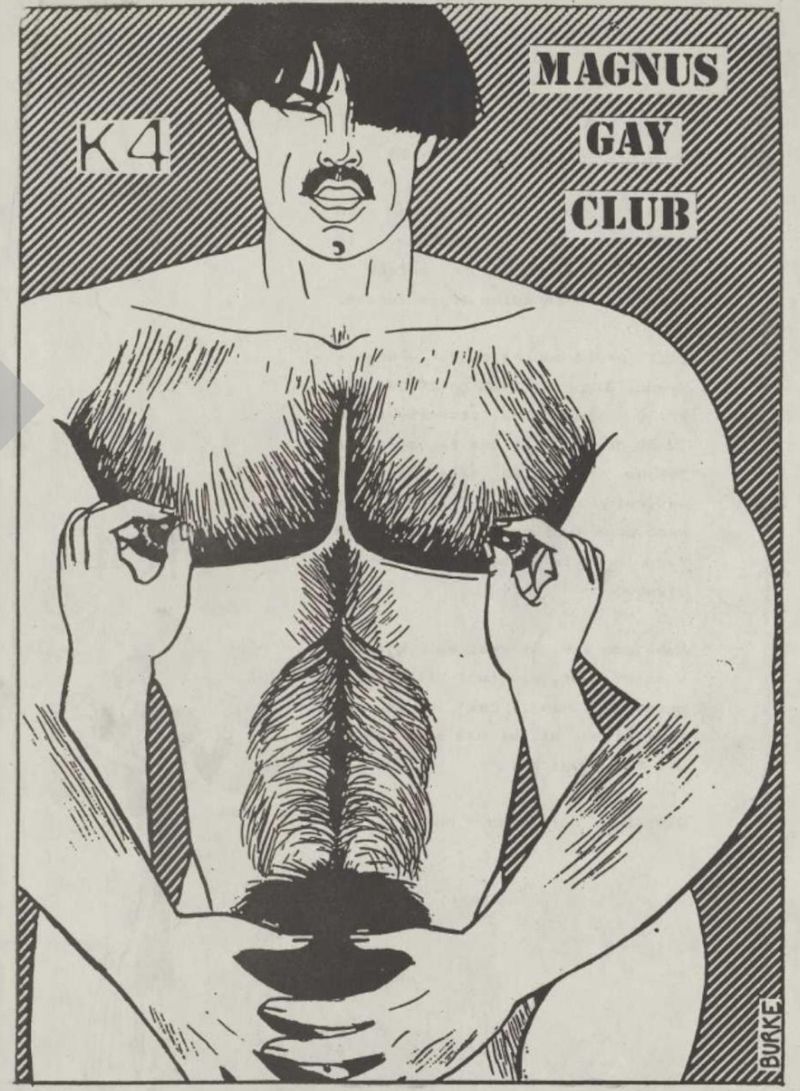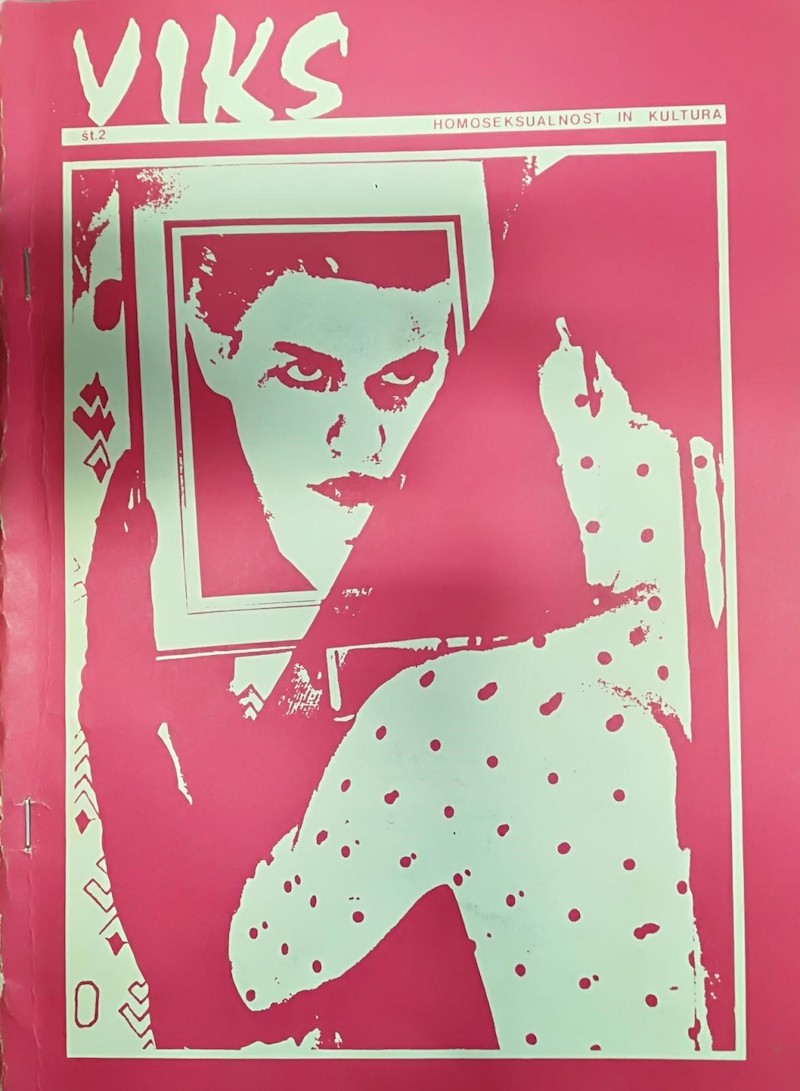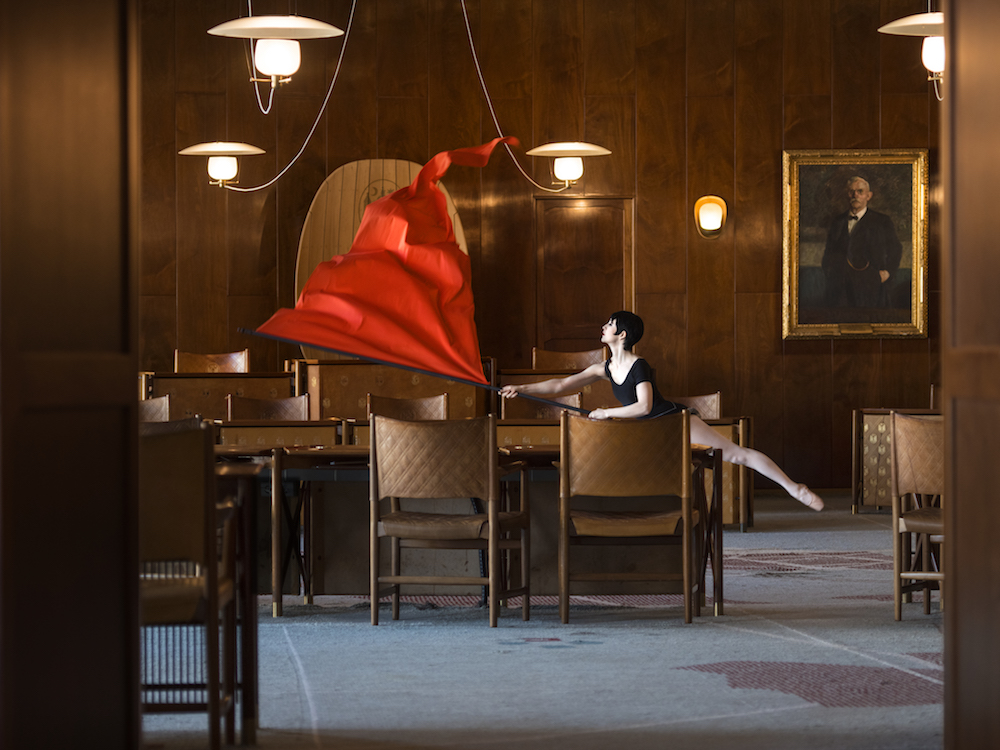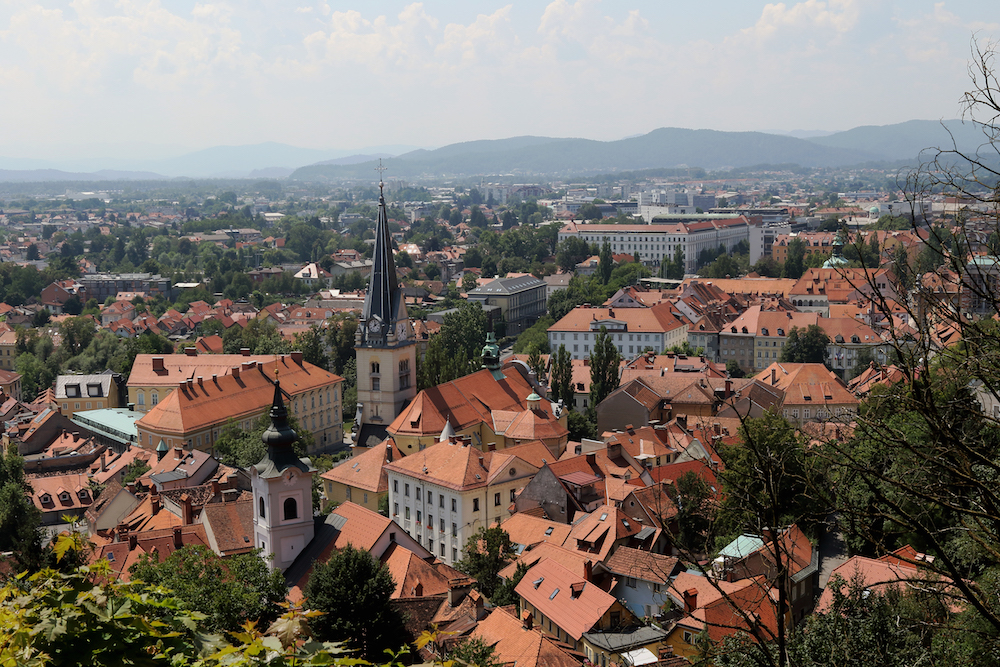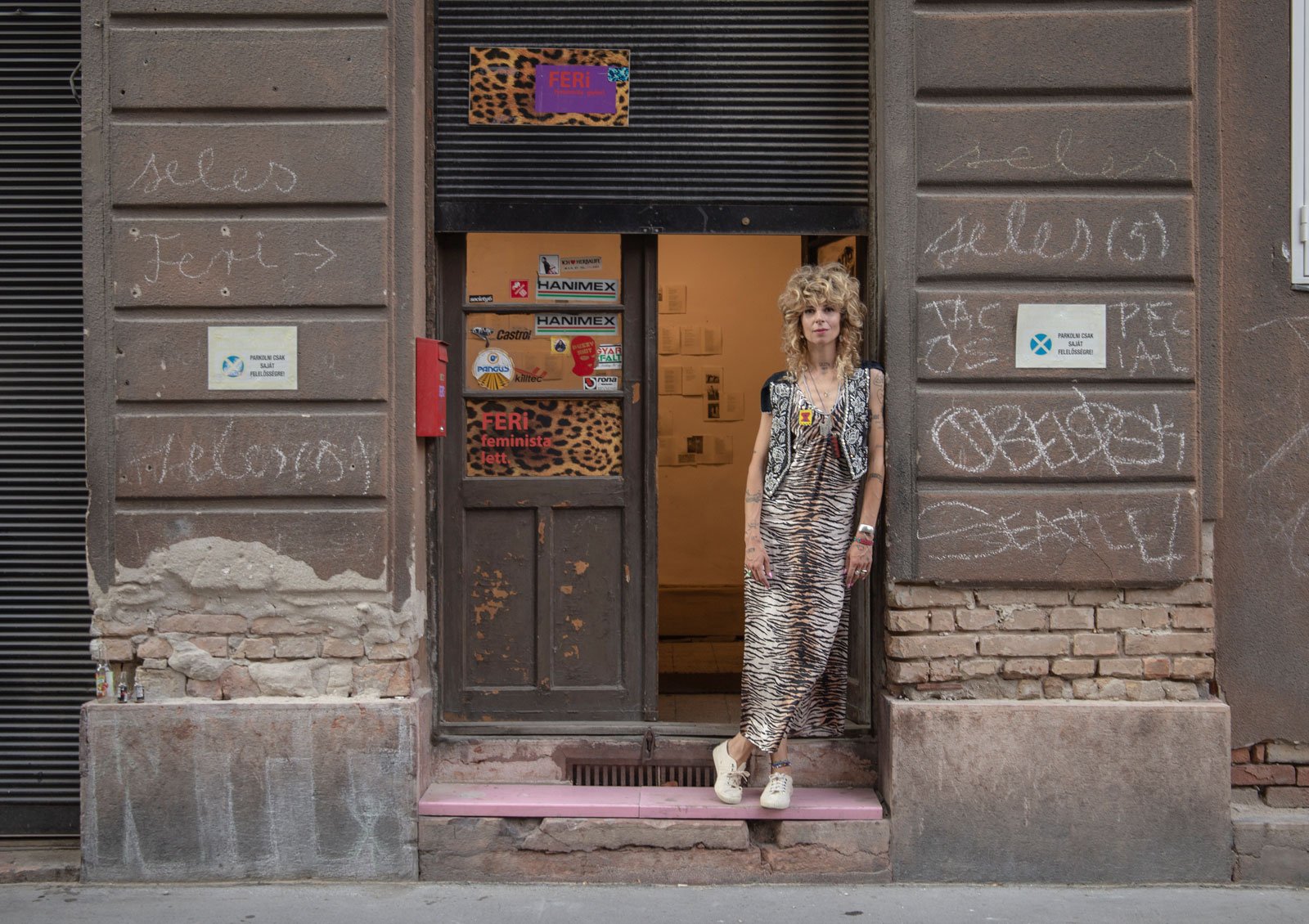How one underground party night changed Ljubljana – and Yugoslavia – forever

Following the decriminalisation of homosexuality in 1977 and the death of Josip Tito in 1980, Yugoslavia’s LGBTQ+ community began to imagine a new future. Beneath the monotonous socialist streets, a rampant homoerotic queer movement bubbled — one that would change Ljubljana forever.
In 1984, the K4 Club was an inconspicuous venue tucked among the concrete streets of Ljubljana. But while the bar seemed innocuous from street level, the inside walls were plastered with homoerotic posters: men giving and receiving oral sex, wearing fetish gear, and sporting “Tom-of-Finland” style moustaches. If you decided to follow the electronic music reverberating from the walls — late on Saturday nights — you’d come face-to-face with the Slovenian capital’s infamous Magnus Gay Parties, and a crowd of gay men dancing: some euphorically, some hesitantly.
“Ljubljana’s [queer scene] was a lot more underground; it was dark, full of leather, and closeted,” says Brane Mozetič, a queer poet and one-time regular at the Magnus parties. Although the club provided sanctuary for many, Brane recalls a tense atmosphere outside of its four walls. “I remember that the people that I met in the club were not the same outside. Outside the club no-one wanted to know me, or even say hello. You have to understand that Ljubljana is a small city.”
Founded by Aldo Ivančić and Bogdan Lešnik in 1984, Magnus was — and still is — the queer branch of the ŠKUC Association (The Student Cultural Centre): a nonprofit student organisation, producing and upholding alternative culture in Ljubljana. The purpose of Magnus, and the parties, was to promote “socialisation of homosexuality through culture.” To this day, the K4 Club remains one of the last surviving alternative venues in Ljubljana.
Prior to 1984, gay men had only been able to meet (briefly) through “cruising”: walking or driving through certain areas to meet others for sex. A particular hotspot was an ominous toilet block in Tromostovje, next to the bridge connecting the medieval quarter with the new town. Public toilets were commonly known as “chapels” by gay men in the city, whereas “putting the baby Jesus to bed” was a euphemism for sex. Religious metaphors were used to make conversations sound more innocent and therefore less suspicious. With only the darkness of night for protection, men would loiter around these chapels, craving the intimacy that society denied them.
By founding Magnus, Lešnik wanted to provide a different kind of space to LGBTQ+ Slovenians, one that fostered a strong sense of community, not just sex. Lešnik used West Berlin’s queer movement as a reference point, taking advantage of the relatively relaxed and liberal nightlife in Ljubljana at the time to bring the same vision to Yugoslavia. Slovenia’s queer community created its first safe space through Magnus’ parties, which would act as a launchpad into creating a movement.
But if Magnus was to succeed as a movement, it had to prove itself to be more than just a party— so in 1984, the Magnus Festival was born. The festival set up galleries, hosted lectures, poetry readings, created exhibitions on “gay publishing over the world”, and screened gay and lesbian films. The festival welcomed international guest speakers who were experts on queer theory, such as Frank Arnal and Guy Hocquenghem. Attendees were handed copies of Viks: a magazine on homosexuality that aligned itself with leftist counter-cultural movements in Slovenia and Western Europe.
Viks Magazine is just one example of how Ljubljana was starting to lead critical thinking in Yugoslavia during the period. Sample Viks articles included “Pink Love under Red Stars”, a historical overview of homosexuality in the Soviet Union. It argued that the LGBTQ+ movement was unable to overcome the abuse of the Stalin era, when exposed queer people were condemned as spies and traitors, and sent to the gulag. Despite the historical incompatibility between Communism and homosexuality, Viks presented the German Democratic Republic (GDR) as an example of how they can coexist and how a “dialogue could take place between the government and gay and lesbian groups.”
At a time when both HIV and AIDS were widely misunderstood, Magnus imported lifesaving information from the West and disseminated it to an otherwise oblivious Yugoslavian audience
Slowly, Magnus spread into other areas, reacting to issues such as the AIDS crisis. At a time when both HIV and AIDS were widely misunderstood, Magnus launched its own public information campaign, translating scientific research from Canada and the United States and printing it on brochures. Most importantly, it didn’t shy away from the topic of safe sex: from “mutual masturbation” to “swallowing urine”, the leaflets covered the entirety of gay sex and its risk factors for infection. In the process, Magnus imported lifesaving information from the West and disseminated it to an otherwise oblivious Yugoslavian audience.
As Magnus began to reach into academia, print, arts and culture, and clubs, Ljubljana’s reputation as a centre of progressiveness within Yugoslavia also thrived. “[Magnus] opened up a space within these social movements; it opened up questions, and brought topics to a certain level of attention,” says Dr Roman Kuhar, Professor and Dean at the Faculty of Arts, University of Ljubljana. With these gains, Magnus parties achieved a sense of notoriety throughout Ljubljana and the wider region. The community began to be seen as part of society, with venues to hire and money to spend in them.
But as Magnus gained traction, so did the backlash. The group’s prized Saturday night slot at the K4 club was taken away and replaced by a less attractive Sunday night listing.
“It sent a clear symbolic message as the community was pushed to the margins of the ‘party week’,” says Dr. Kuhar. “For a gay man like myself growing up in a rural area of northern Slovenia, the words ‘Roza nedelja’ or ‘Pink Sunday’ became some kind of an all-inclusive reference to homosexuality. It was such a strong marker that the term was also used in mockery.”
Yet despite increasing hostility, Ljubljana was still considered progressive in comparison to other Yugoslavian states. So much so, that Croatian-born Ivančić used Ljubljana and the ŠKUC as the base for Borghesia: a homoerotic, post-punk, New-Wave band, who used queer and alternative culture as a tool for social change.
Borghesia took underground queer culture and edged it towards the mainstream, as part of Ljubljana’s popular alternative music scene. One of their songs, “Night Walks” (Noćne Šetnje), was released in 1984. It depicted the lives of “hidden homosexuals”, who would go cruising for late-night sex in strange locations:
Using Ljubljana as a launchpad, Borghesia tried to bring the city’s liberal queer movement to Yugoslavia as a whole. Vocalist Dario Seraval even performed “Night Walks” to a stunned audience live on Yugoslavian TV. Dressed in head-to-toe black, Seraval smoked throughout the performance, his gaunt, pale face, covered in lipstick and eyeshadow. In the process, he cemented Ljubljana in the minds of millions as one of Yugoslavia’s most progressive enclaves.
Yet public reaction to Magnus and Borghesia across Yugoslavia was relatively quiet. The LGBTQ+ community were generally considered a minority group on the fringes of society who posed little threat. It wasn’t until the impending breakup of Yugoslavia that homophobia appeared in full force, fuelled by misconceptions and fear of the AIDS crisis. Thankfully, the Magnus movement helped anchor Ljubljana as a progressive city; one that would weather the oncoming nationalist storms of the 1990s.
Prior to 1984, Ljubjlana’s LGBTQ+ community was demobilised, and existed mainly in the shadows. In a few years, Magnus brought queer people, conversations, ideas, and creativity together — embedding them within Ljubjlana’s nightlife and creative spaces. “A lot of good came from these radical beginnings by artists and activists. They helped to build a plural and democratic society, and created a new cultural scene,” says Jernej Skof, Magnus’ current coordinator.
Over the years, the initiatives founded by the 1980s queer movement have been institutionalised into a strong Ljubljana Pride, a queer community in the city’s Metelkova neighbourhood, an LGBTQ+ publishing house, and programmes for people living with HIV. The Magnus Festival film screenings became the Ljubljana LGBTQ+ Film Festival — the oldest queer film festival in Europe. Organised by Mozetič, this annual event still showcases queer releases from around the world, to a Slovenian audience.
Nowadays, a new generation of queer creatives occupy these spaces and platforms. “The 1980s queer movement inspired me to be brave and strong in my art and opinions,” says Bosnian-born Amar Muratović, who performs as his “Balkan Camp” drag alter-ego, Amii Queen. “[Ljubljana] at the time was revolutionary, iconic, brave; they built a safe space for us.” Magnus founded Club Tiffany in the city’s Metelkova district, where Muratović appears as a regular performer.
Amii Queen. Image: Yeremie Pierre Noir
The venue is an autonomous cultural art centre which pays special attention to youth education. “We try to enable as many LGBTQ+ persons as possible to become cultural operators, artists, performers, writers or poets,” says Skof. “Besides cultural activism, HIV-related activism and social activism both play an integral role in our work.”
Yet while Magnus’ legacy has deep roots, its future remains uncertain. In 2020, Slovenian Prime Minister, Janez Janša announced a “war on culture”, widely seen as an attempt to control key cultural institutions and direct them towards more conservative and nationalistic ideals. The following months saw top curators and leaders at Slovenia’s museums leave their posts amid accusations of political pressure, while many queer, migrant, or left-leaning non-governmental groups have seen their leases terminated by landlords. Fortunately, Club Tiffany is still up and running, but as the political situation worsens, closure remains a looming possibility.
Almost four decades on from 1984, Slovenia is once again at an ideological crossroads. “We have seen a rise in open homophobia in the parliament and, of course, on social media. Hate speech has reached new heights,” says Skof. Many fear that with anti-LGBTQ+ politicians gaining traction across Eastern Europe, Slovenia could be next to follow suit. “We have an election in Spring 2022,” Skof says. “We will have to wait and see.”
